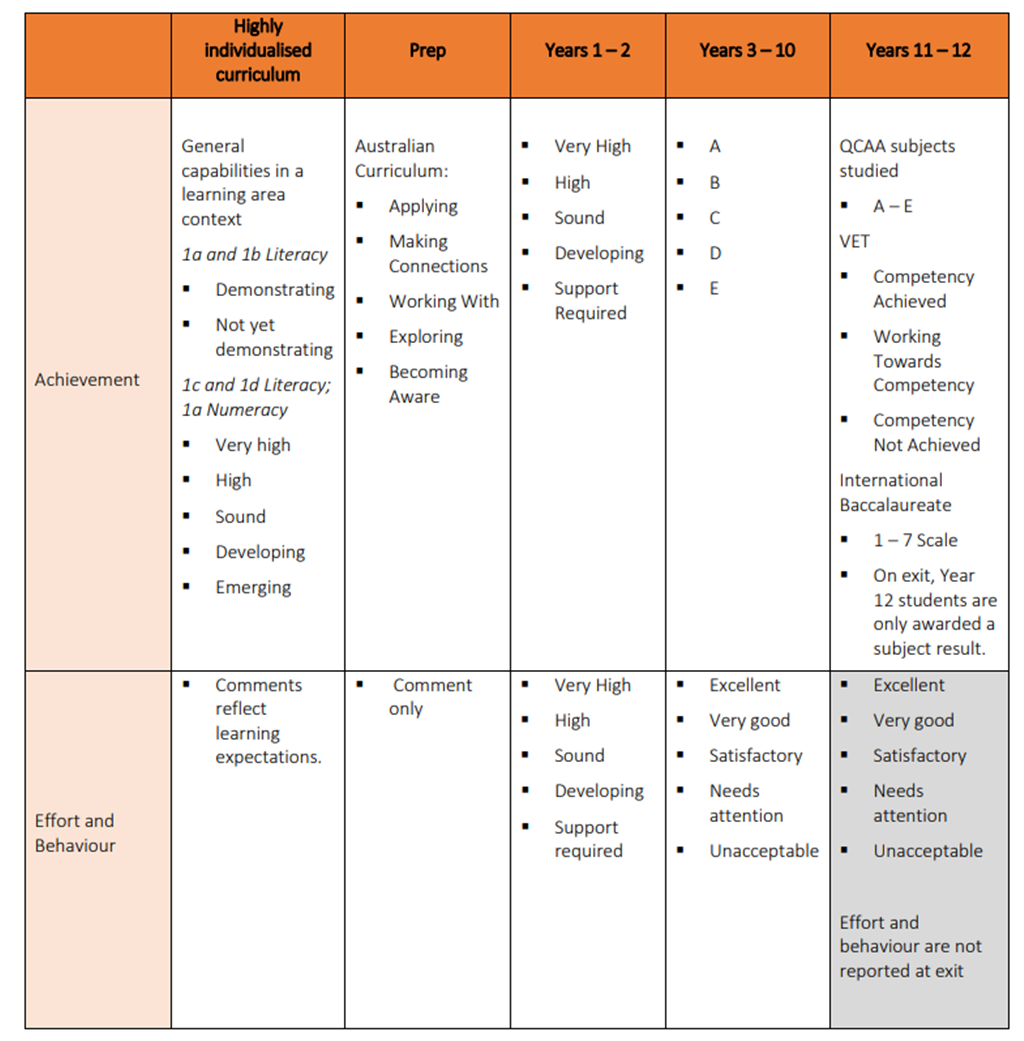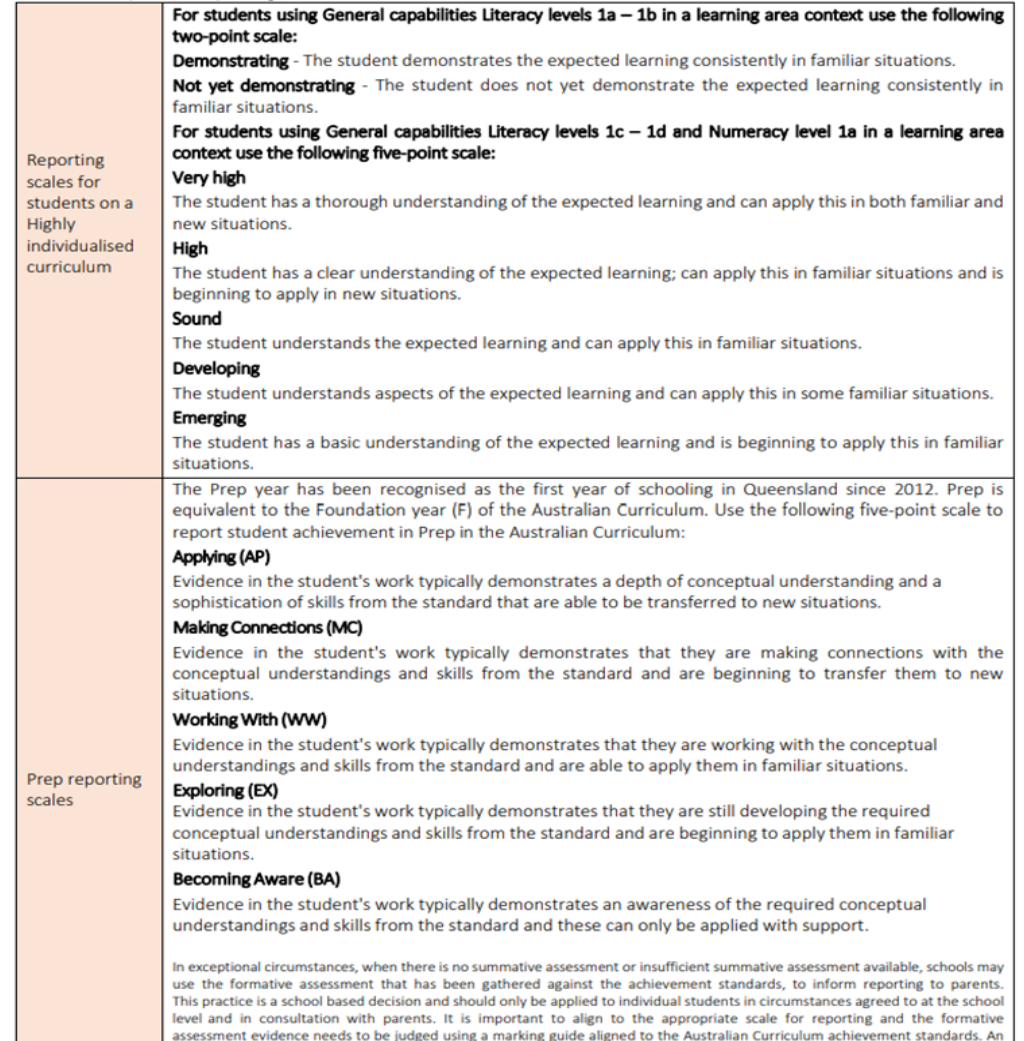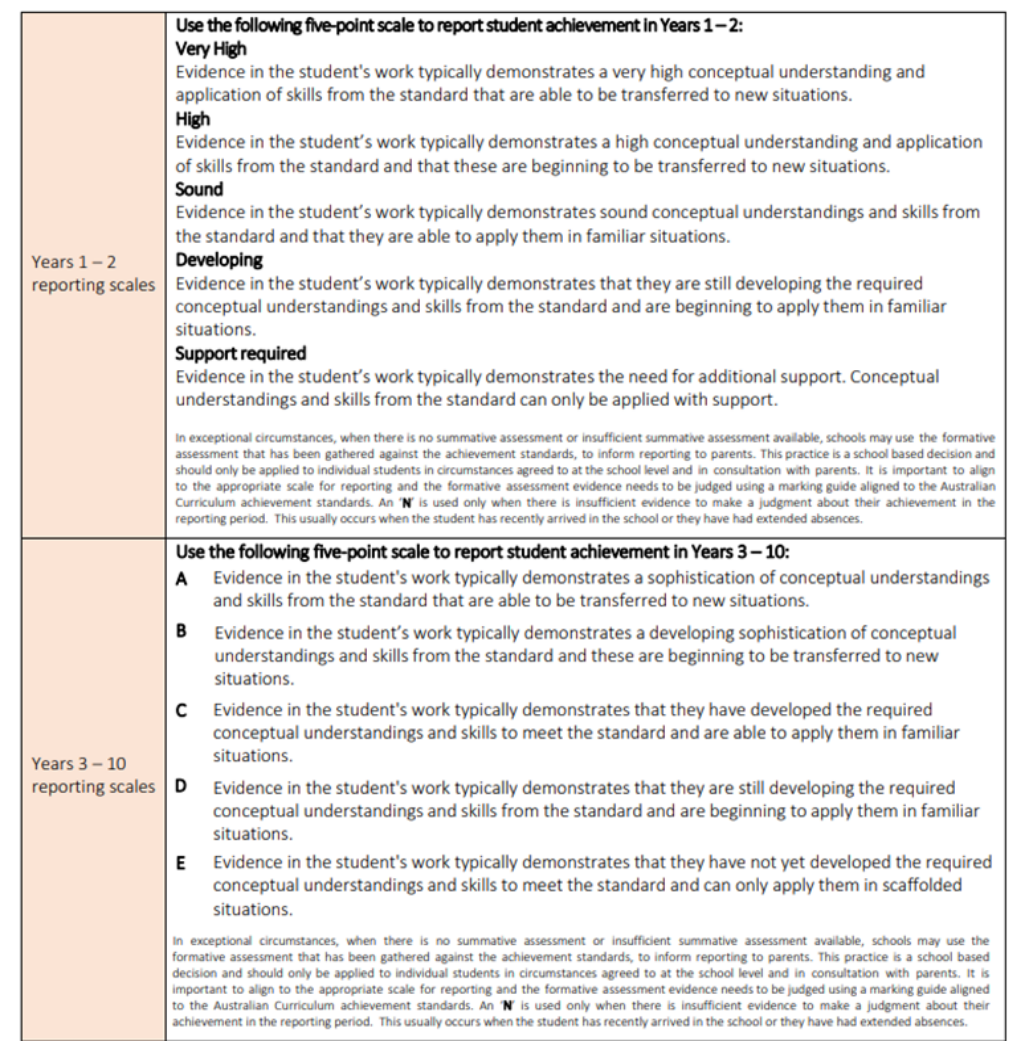Assessment involves the ongoing collection of information about what students know and can do in relation to the Australian Curriculum. Students are assessed and reported against the acheivement standard for each of the 8 learning areas of the national curriculum. Students are also given a rating for their effort and behaviour in each of the learning areas.
How students are graded, and what each grade represents, is explained in the tables below:
![]()
![]()

![]()
![]()

 Achieving a ‘C’, 'Sound' or 'Working With' on the report card is considered a sound level of achievement. In other words, it should be celebrated as achieving at the level expected of an average child at this stage of schooling.
Achieving a ‘C’, 'Sound' or 'Working With' on the report card is considered a sound level of achievement. In other words, it should be celebrated as achieving at the level expected of an average child at this stage of schooling.
Taranganba State School has an Assessment Framework that provides a yearly overview of common assessment tools arranged by year level and is used to monitor student progress across each year level cohort. Targets are incorporated within this document. Formative, diagnostic and summative assessment is evident in all classrooms and is planned, engaging and ongoing.
Assessment practices include a range of instruments and reflect the techniques of observation, consultation, focused analysis and peer and self-assessment. Major assessment tasks are moderated against the achievement standards. Moderation of major assessment tasks is a quality assurance process and an opportunity to enhance teacher and community confidence in results. Moderation occurs in all year levels.
Face to face reporting is offered twice annually through parent-teacher interviews at the end of term one and once more in term 3.
In addition to school generated assessment, the Queensland Curriculum, Assessment and Reporting agenda mandates that:
All year 3, and 5 students sit the National Assessment Program – Literacy and Numeracy (NAPLAN) in May. Parents receive a systemically generated report showing their child’s performance in comparison to the National cohort.